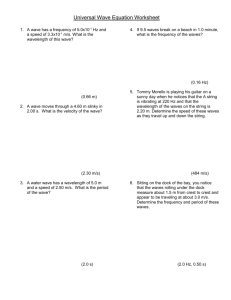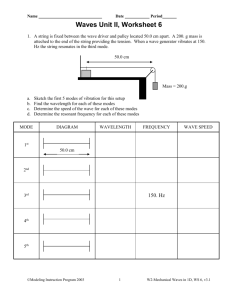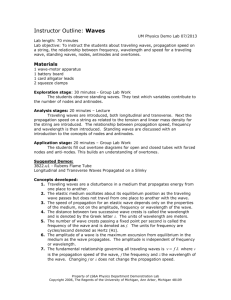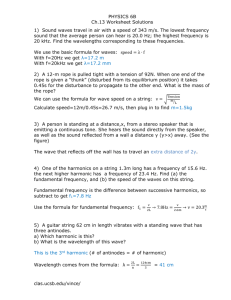Waves
advertisement
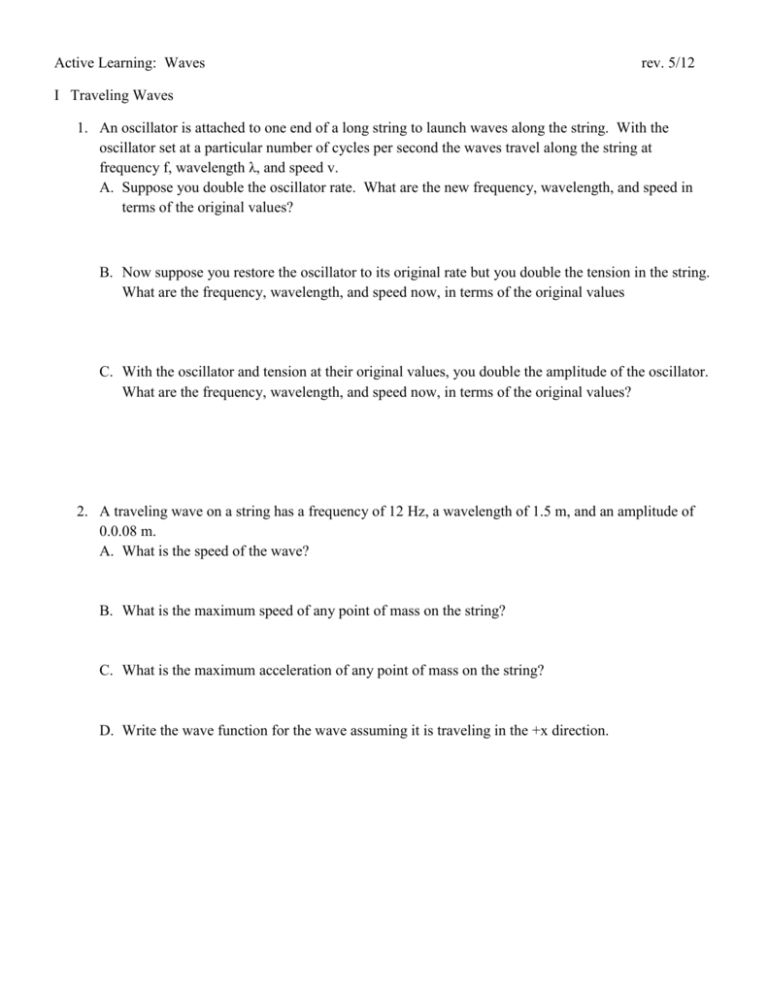
Active Learning: Waves rev. 5/12 I Traveling Waves 1. An oscillator is attached to one end of a long string to launch waves along the string. With the oscillator set at a particular number of cycles per second the waves travel along the string at frequency f, wavelength λ, and speed v. A. Suppose you double the oscillator rate. What are the new frequency, wavelength, and speed in terms of the original values? B. Now suppose you restore the oscillator to its original rate but you double the tension in the string. What are the frequency, wavelength, and speed now, in terms of the original values C. With the oscillator and tension at their original values, you double the amplitude of the oscillator. What are the frequency, wavelength, and speed now, in terms of the original values? 2. A traveling wave on a string has a frequency of 12 Hz, a wavelength of 1.5 m, and an amplitude of 0.0.08 m. A. What is the speed of the wave? B. What is the maximum speed of any point of mass on the string? C. What is the maximum acceleration of any point of mass on the string? D. Write the wave function for the wave assuming it is traveling in the +x direction. Active Learning: Waves II Standing Waves 1. A traveling sound wave has frequency 340 Hz, wavelength 1 m. What is the length of the sound tube open at both ends in which this wave will set up a fundamental standing wave? a. 0.5 m b. 1.0 m c. 1.5 m d. 2.0 m e. Standing waves have nothing to do with traveling waves so the question is meaningless 2. A 0.80 m string is oscillating in the 4th harmonic. A. Where along the string are the Nodes? B. Where are the Anti-nodes? C. If the amplitude at the Anti-node is 4.0 mm, what is the amplitude at x = 15 cm? 3. The 5th harmonic for an open – closed sound tube is at 600 Hz. The speed of sound is 343 m/s. A. What is the length of the pipe? B. Suppose you open the closed end. Will the tube still be in resonance at 600 Hz? If so, what is the harmonic number?




